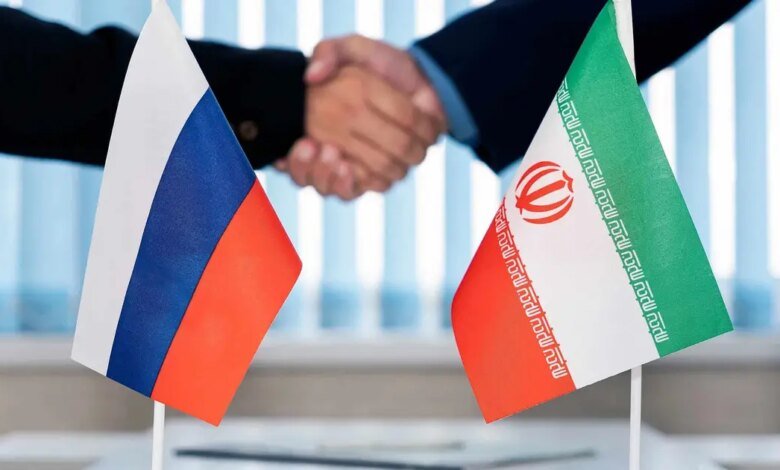Iran’s elusive quest for Russian investments

After two decades, Russia has not finalized its investment promise for a railway line in Iran, casting significant doubt over the viability of Moscow and Tehran’s recent claims of a historic cooperation agreement between the two nations.
Iran’s Deputy Transportation Minister, Kheirollah Khademi, stated this week that if Tehran cannot secure Moscow’s loan, its participation in the railway project would be essentially meaningless.
Despite years of negotiations and the signing of several memoranda of understanding, with the latest one concluded 15 months ago, Moscow has yet to decide on investing in or providing a loan to Tehran for the completion of the project.
The railway would connect the two northern cities of Rasht and Astara, on the border with Azerbaijan – and make it a critical segment of the International North-South Transport Corridor (INSTC) to link India, Iran, Russia, and Europe.
With the project requiring a $1 billion investment, the Islamic Republic has sought Russian loans, aiming to earn transit revenue from moving Russian goods to Asian countries and vice versa.
In May 2023, alongside the signing of a MoU between the two countries to develop this railway line, then-Iranian President Ebrahim Raisi’s website described it as a “giant project.”
It announced that the railway line was scheduled to be completed in three years, stating it would have the capacity to transport 10 million tons of cargo in its first year of operation, as well as up to one million passengers annually.
Based on this, Raisi’s website stated, the railway could generate $20 billion annually for Iran.
Yet, expecting $20 billion in annual revenue from a $1 billion investment in a 164-kilometer railway can be seen as unviable, given that Iran’s total foreign cargo transit revenue from all modes of transport (roads, railways, air, and sea) was $1 billion in the previous year, according to Iranian customs statistics.
More importantly, Iran has 15,000 kilometers of railway lines, yet only a very small portion of foreign goods transit is conducted via these railways.
It is thus unclear how the government expects to generate $20 billion in annual revenue by adding just 164 kilometers (approximately one percent) to its existing railway lines.
Adding further uncertainty to the project’s future is Khademi’s admission that the final cost of the project has not yet been determined.
Iranian authorities’ approach of exaggeration
In recent years, Iran has taken an exaggerated approach in its cooperation with Russia and China to counter perceptions of international isolation.
For instance, Iranian Oil Minister Javad Owji recently claimed that Russia has agreed to deliver 300 million cubic meters per day (mcm/d) of gas to Iran through the construction of a massive pipeline, which would transform the Islamic Republic into a “regional energy hub.”
This claim of 300 mcm/d in Russian gas deliveries starkly contrasts with the current reality, where only Turkey and Iraq are customers of Iranian gas. Last year, their combined daily purchases from Iran totaled just 33 mcm.
Moreover, Pakistan has suspended its contract to import 22 million cubic meters per day (mcm/d) of Iranian gas since 2015 due to the risks of US sanctions. Even if Pakistan were to begin importing gas from Iran, the Islamic Republic would be able to export only 55 mcm/d in total. It remains unclear how the additional Russian gas would benefit Iran.
Meanwhile, both Turkey and Iraq, as Iranian gas customers, have signed agreements with Turkmenistan for gas purchases.
Turkey not only directly purchases gas from Russia but also transits Russian gas to Europe, essentially eliminating the need to buy Russian gas via Iran.
Iran itself faces a gas deficit, and if it were to consume imported Russian gas, the cost would be equivalent to the annual budget of the government, making it practically impossible.
Iranian Oil Minister Javad Owji last week went even further, claiming that Russia has agreed to bear the cost of constructing a gas export pipeline to Iran via the Caspian Sea.
The estimated cost of constructing a pipeline with a daily transmission capacity of 300 million cubic meters (mcm) of gas is approximately $20 billion for the maritime segment alone. Additionally, hundreds of kilometers of pipeline would need to be laid across Russia’s land segment to reach the northern Caspian Sea. Given that Russia has not been willing to invest even $1 billion in a short Iranian railway line to complete its North-South corridor for the transit of goods to Asian markets over the past two decades, it is highly doubtful that Russia would be willing to spend tens of billions of dollars to build a gas pipeline to Iran.
Owji’s expectation, therefore, appears to be highly unrealistic.
Myth of capital attraction
Iranian officials often said that over the past three years, the country has attracted $13 billion in foreign capital.
This figure, however, represents foreign investment permits issued by the government in the past three years, rather than the actual investments made by foreign companies or governments in Iran.
According to statistics from the UN Conference on Trade and Development (UNCTAD), Iran has attracted a total of $4.347 billion in direct foreign investment over the past three years. In comparison, this figure is eight times less than Turkey’s foreign investment and fifteen and seventeen times less than that of Saudi Arabia and the United Arab Emirates, respectively.
Meanwhile, the statistics by the Central Bank of Iran show that the net capital account in Iran was negative $44.5 billion from March 2020 to December 2023.
In other words, capital flight from Iran over the past three years has been equivalent to ten times the amount of foreign direct investment attracted during the same period.
Capital flight from Iran exceeded $20 billion in the first nine months of the last fiscal year (March 20, 2023, to December 22, 2023), marking a historic record. The Central Bank has not yet published the net capital account status for the entire fiscal year.
While Russia continues to procrastinate in granting a $1 billion loan for the Rasht-Astara railway line, the Iranian state has expediently provided hundreds of suicide drones to Moscow over the last year for its military invasion of Ukraine.
As a result, Iran not only faced severe sanctions from Europe and the United States but also effectively lost the opportunity to continue nuclear negotiations for sanctions relief. This situation is exacerbated by Russia’s imposition of preconditioned sanctions exemptions on trade with Iran and its reported takeover of Iran’s oil, steel, and petrochemical markets in Asia, further diminishing Iran’s ability to negotiate for sanctions relief.
Source link





